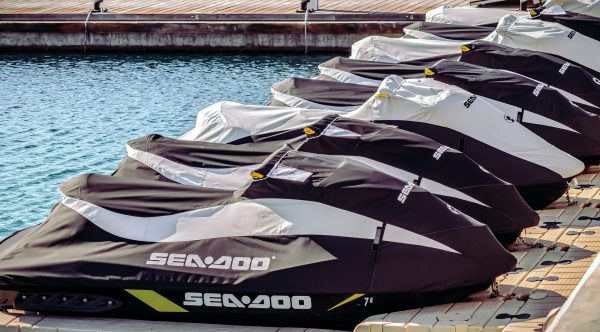Due to the fact that they involve performing risky tasks, extreme sports are fascinating and thrilling. Although they must be perfectly safe to avoid any catastrophic injuries or fatalities, sporting activities must nonetheless convey a sufficient level of danger to sate our need for adrenaline.
One of the most enjoyable extreme activities is bungee jumping, which has grown in popularity over time. Additionally, it’s not only for thrill-seekers. But how can we be certain that it is 100 percent safe? Well, it primarily relies on the materials used to make the bungee cords.
Since bungee cords are meant to prevent us from striking the ground, it is only natural that we would want them to be as durable as possible. Kevlar, a material that really stops bullets, is the definition of tough. However, there are a few factors that prevent bungee cords from being manufactured of Kevlar.

Properties Of Kevlar
It is understandable that most people think bungee jumping cords are constructed of something as durable as Kevlar given the amount of stress they are subjected to throughout the duration of their lives. However, kevlar and bungee cords work in quite different ways to accomplish the same goal, which is to stop the momentum.
Kevlar can handle a great deal of strain and stress, but it accomplishes it by being robust, heat resistant, and inflexible most of the time. Kevlar is extremely resistant to all types of harm, including fire, slicing, and impact, in addition to being lightweight.
Kevlar has been employed in the creation of body armor, cut-resistant fabrics, firefighting gear, and racing car tires since it was created to halt motion as soon as it strikes the material.
Kevlar is not utilized to make bungee cords, despite the fact that it has many uses in contemporary culture and business.
What Are Bungee Jumping Cords Made From?
Bungee cords have an outer covering and are constructed of synthetic or natural elastic materials.
The materials utilized can change based on the weight the rope is intended to support. Naturally, there will be more inner strands of elastic material the greater weight it is intended to support.
Rubber, either synthetic or natural, makes up the interior portion. For a while, latex was used to make shock cords, but the material turned out to be too prone to weather degradation to be trusted for bungee cord production.
The outer layer, which is comprised of cotton or nylon, provides as both an additional layer of support and a covering for the elastic fibers. In addition to this, the outer layer is utilized to alter the cord’s appearance, giving it a personalized look.
Additionally, some businesses color-code their cables to indicate the year and month of manufacturing, which should make it clear to everyone when the cord was created and how long it has been in use.
Why Aren’T Bungee Jumping Cords Made Of Kevlar?
Bungee cords serve the same objective as kevlar, which is to halt the motion, but they do so completely differently.
Kevlar is not naturally elastic and does not even slightly stretch. This indicates that while kevlar might be able to halt your fall when you jump off the platform, it won’t let you back out after the jump.
In other words, the goal is to gradually halt the downward movement rather than simply stopping it abruptly.
Do you know how, while riding in a car or bus, your body keeps moving even after the vehicle stops? Since there are no seat belts to slow you down, the force and speed are substantially higher while bungee jumping.
If you were to immediately cease falling, all the water in your body would transfer the energy and all the liquid and internal organs in your body would continue the downward motion in accordance with Newton’s First Law of Motion, which would not be fun for you.
Bungee Cord’s Elongation Rate
This shows how far a material can stretch before breaking. This characteristic shields you from harm whether you’re bungee jumping with your dog or by yourself.
This pace is indicated as a percentage of the starting length. The elongation rate of a cord is therefore 50% for a cord that expands to half its original length and 100% for a bungee cord that expands to double its length.
Most bungee cords elongate at a rate of 110%, however they can elongate anywhere from 100% to 160%.
Less than 1% elongation is clearly insufficient for generic Kevlar (K29) to be used as bungee cord material.
Tensile Strength Of Bungee Jumping Cords
The maximum amount of stress a material can withstand without cracking, snapping, or experiencing other kinds of cross-sectional damage is known as the ultimate tensile strength or simply the tensile strength.
The thickness of a typical shock cable will determine its tensile strength. The tensile strength of a 8-inch cable is 100 pounds, whereas that of a 2-inch bungee cord is 450 pounds.
The tensile strength of Kevlar is eight times greater than that of titanium, although this is not the deciding factor for the bungee cords. It is not required for shock cords to be that robust, even though having strong cables that can sustain stress without breaking is quite vital.
The Resilience Of The Shock Cord
This refers to the substance’s capacity to absorb energy, either directly or indirectly (for example, through elasticity), and then to redistribute it such that it takes on its original form. The quantity of energy a material can withstand before losing the ability to assume its original form serves as its defining characteristic.
Bungee cords use their elasticity to absorb the energy and pass it along the cord, keeping your body from absorbing as much of it as possible, which would be quite harmful.
Shock Cords Are Designed Flawlessly
Rubber is heated and then cooled to form the inner layer, which improves its elasticity and durability and allows for proper shaping. Depending on the type of bungee cord it is intended for, the material is squeezed into straps after being heated so that it can be weaved together to boost its resilience or utilized as a single line.
Three braided rubber threads make up the heart of the most popular kind of shock cord.
Cotton or nylon string is used to construct the outer layer. The rubber is stretched and compressed together while the outer, nylon string is wrapped around the inner, rubber string to make sure it is securely coiled inside its protective sleeve.
Bungee Connectors Are Made To Last
Finally, since a chain is only as strong as its weakest link, we must ensure that the components of bungee cords that attach them and connect them to the jumper are as robust as the rest of the cable.
The most common ways to secure bungee cords are using carabiners, hooks, or metal joints. They also available in non-abrasive varieties to stop the metal from corroding from repeated usage.
Make careful to tell the bungee service provider your exact weight and height while selecting the connector. In addition, the connections needed to guarantee safety will depend on the height you’re leaping from.
How Can We Know Bungee Jumping Cords Are Safe?
When getting ready for the leap, the last thing we want to consider is what would happen if the cord breaks. Whether bungee jumping or mastering parkour, safety should be the top priority for everyone engaging in extreme sports.
You shouldn’t worry, though. The cords must be examined regularly for safety purposes, and if there is even the least suspicion that something is amiss, the cords must be replaced.
In addition, each cable has a maximum amount of leaps before it breaks. Long before this limit is reached, mandatory replacement is necessary.
Last but not least, bungee cord technology has been present since the late 1970s and has significantly advanced since then. Nowadays, bungee jumping is far safer than it was in the past.
That being said, you should only choose a qualified and carefully screened provider if you’re thinking about going bungee jumping. This will guarantee that all safety procedures have been followed and that there is no cause for concern.
To Sum It Up
Kevlar still has many uses in our business and in technology, even if it is not utilized to make bungee cords. Additionally, just because it isn’t utilized to make shock cords doesn’t indicate that the substance itself is flawed; rather, it just means that it has another application.
Similarly, just because bungee jumping cords are strong enough to prevent injuries when bungee jumping doesn’t suggest that they’re an excellent all-around cordage; rather, it only means that they fulfill the function for which they were designed.



